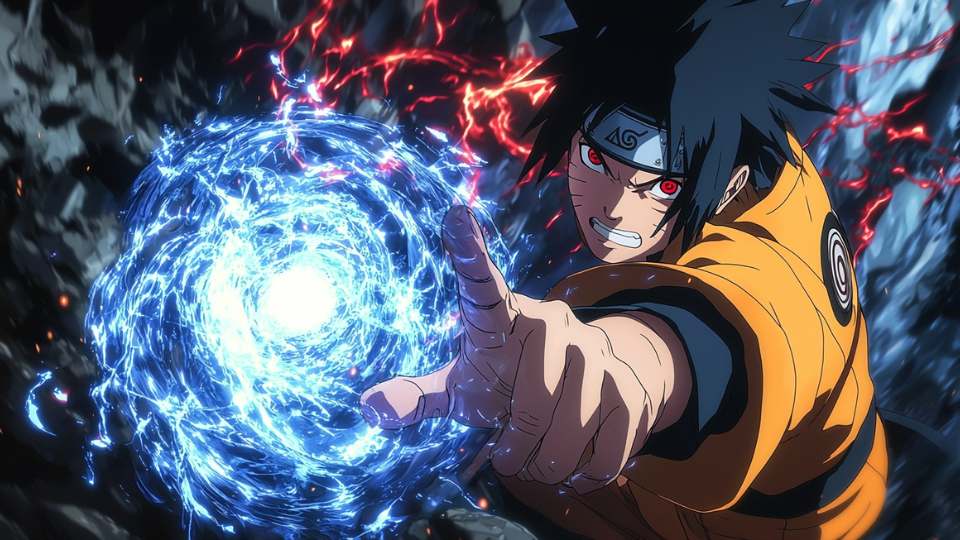The Naruto series is known for its intricate world-building, thrilling battles, and deeply emotional storytelling. But one of its most fascinating aspects is the hidden meanings behind the names of its jutsu (ninja techniques).
Many of these names aren’t just cool-sounding moves; they carry cultural, mythological, or linguistic significance. Let’s dive into some of the most iconic jutsu and their hidden meanings.
1. Rasengan (螺旋丸) – Spiral Sphere
The Rasengan, one of Naruto’s signature techniques, is a compact sphere of swirling chakra. In Japanese, “螺旋” (rasen) means spiral and “丸” (gan) means sphere or ball. This name perfectly describes the jutsu’s structure and movement, as the chakra swirls in a powerful vortex.
Interestingly, the technique was inspired by the movement of the Tailed Beast Bomb, making it even more symbolic considering Naruto’s link to Kurama.
2. Chidori (千鳥) – One Thousand Birds
Sasuke’s trademark jutsu, the Chidori, is a high-speed, lightning-based attack. The name translates to “One Thousand Birds,” referencing the sound produced when it is activated, which resembles the chirping of many birds.
This name is also a nod to a legendary Japanese folktale about Tachibana Dōsetsu, a samurai who wielded a sword called “Chidori” that could cut through lightning. The connection between the legend and Sasuke’s Lightning Release abilities makes the name even more fitting.
3. Amaterasu (天照) – The Shining Heaven
Amaterasu, the black flames that never extinguish, is named after Amaterasu-Ōmikami, the Shinto goddess of the sun. In Japanese mythology, Amaterasu is a central deity, associated with light, fire, and the heavens.
It’s fitting that this technique is wielded by Sasuke and Itachi Uchiha, whose Sharingan techniques are often named after Shinto deities, symbolizing their godlike abilities.
4. Susanoo (須佐能乎) – The Storm God’s Guardian
Susanoo, the massive warrior avatar summoned by the Uchiha, is named after Susanoo-no-Mikoto, the Shinto god of storms and seas. In mythology, Susanoo was a powerful but chaotic deity who defeated the eight-headed serpent Yamata no Orochi.
This connection is mirrored in the series when Itachi’s Susanoo wields the Totsuka Blade, a legendary weapon also linked to Japanese mythology.
5. Kamui (神威) – Divine Authority
The space-time jutsu used by Kakashi and Obito is called Kamui, which means “Divine Might” or “Godly Power.” In Ainu mythology (indigenous to Japan), the term “Kamui” refers to divine spirits or gods.
This meaning aligns with the jutsu’s ability to warp reality itself, making it one of the most feared techniques in the Naruto universe.
6. Kirin (麒麟) – Mythical Thunder Beast
Sasuke’s devastating lightning attack, Kirin, takes its name from a legendary East Asian creature that resembles a dragon or unicorn. The Kirin is a divine beast associated with wisdom, protection, and justice.
In the anime, Sasuke’s Kirin attack harnesses natural lightning to unleash a near-instantaneous strike, emphasizing its divine and unstoppable force.
7. Edo Tensei (穢土転生) – Impure World Reincarnation
This forbidden jutsu, used to resurrect the dead, is called Edo Tensei, where:
- “Edo” (穢土) means “Impure Land” (a Buddhist term for the realm of the deceased).
- “Tensei” (転生) means reincarnation.
The name reflects the unholy nature of the jutsu, as it manipulates the dead against their will, bringing them back to a corrupted form of existence.
8. Hiraishin no Jutsu (飛雷神の術) – Flying Thunder God Technique
The Hiraishin no Jutsu, used by Minato Namikaze, allows near-instantaneous teleportation. Its name, Flying Thunder God, references Raijin, the Shinto god of thunder and storms.
The kanji 雷神 (Raijin) is hidden within the name, linking it to lightning-fast movement—a perfect fit for Minato’s legendary speed.
Conclusion: The Power of Language in Naruto
Masashi Kishimoto, the creator of Naruto, didn’t just create exciting ninja techniques—he infused them with deep cultural and historical significance. Each jutsu name holds hidden layers of meaning, drawing from Japanese mythology, Buddhist concepts, and samurai legends.
Next time you watch Naruto or Boruto, take a closer look at the names of jutsu—you might uncover even more hidden secrets behind the ninja world!
Which jutsu meaning surprised you the most? Let us know in the comments!
